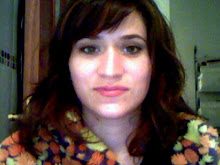Migrant Rights: "Cities of Exclusion in the Gulf: Evidence in a UAE Mall’s Ban on Laborers"
I am now serving as a guest contributer for the website Migrant Rights. Here is a recent post I wrote:
Although attempting to throw a bone by letting it known that this policy is not a total ban, the dehumanization and apartheid of workers in the UAE only becomes more obvious in the following ludicrous concession:
Shraim said it was not a total ban, adding that laborers were “allowed to use the mall’s rear entrance closest to Carrefour during the day and early evening”.
Whereas outdoor shopping areas can occur on public streets, the advent of the mall culture in the Gulf countries has brought with it and increasing privatization of social areas of congregation—and with it greater exclusivity on who gets in and who remains outside.
I first read about the notion of geographies of exclusion and hierarchies of entitlement in reference to the banning of lower income citizens in certain enclaves of Bangalore, India however I believe the same observations can be drawn from this scenario.
Much scholarly research has also been done on in Western cities, particularly the United States, on analyzing how the spatial make-up of cities and municipal governance either divides and fractures cities or unites them.A city of exclusion bars certain segments of its residents from a right to use certain amenities, partaking in certain processes or entering certain areas. In short, a city of exclusion marginalizes certain city dwellers, and this subsequent segmentation of society is manifested in distinct geographies.
The main question this recent development beckons is whether their quest to build modern, skyscraper cities are Gulf countries deliberately creating rules that prevent the very laborers who built these enclaves from being able to access them in their leisure time?
So what makes a city inclusive? The United Nations Human Settlements Programme (UN-HABITAT) is the UN’s responsible branch for the promotion of “socially and environmentally sustainable towns and cities with the goal of providing adequate shelter for all”.
UN HABITAT has a deliberate agenda committed to augmenting cities’ capacity for greater inclusion. According to this initiative, an inclusive city is:
It is a place where everyone, regardless of their economic means, gender, race, ethnicity or religion, is enabled and empowered to fully participate in the social, economic and political opportunities that cities have to offer.
How can we change the direction of cities in the Gulf, with large foreign labor populations to make these urban areas less demarcated by the haves and have-nots? How can we change this “tale of two cities” story?What can be done to counteract these socio-spatial divisions?
This article highlights an urgent and unable to be neglected need by local governments in the Gulf to assess their obligations to low-skilled foreign nationals, who although not citizens, often form the bulk of urban residents. It also demonstrates that much work is yet to be done on the Gulf countries’ participation and best practices in projects that take into consideration the international sustainable urban social development goals as demarcated in the UN HABITAT agenda."




0 Responses on "Migrant Rights: "Cities of Exclusion in the Gulf: Evidence in a UAE Mall’s Ban on Laborers""
Post a Comment